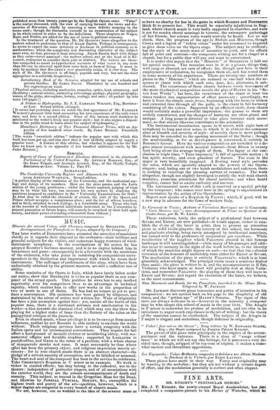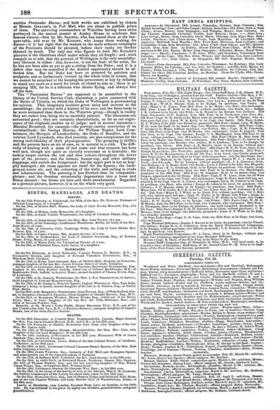FINE ARTS.
MR. KNIGHT'S "PENINSULAR HEROES."
Ma. J. P. KNIGHT, the newly-elected Royal Academician, has just completed a companion-picture to his Heroes of Waterloo, which he entitles Patheindar Heroes; and both works are exhibited by tickets at Messrs. GitsvEs's, in Pall Mall, who are about to publish prints of them. The surviving commanders at Waterloo having been twice portrayed in the annual muster at Apsley House to celebrate that famous victory-first by Mr. SALTER, who has seated them at the ban- quet-table, and next by Mr. KNIGHT, who keeps them waiting for dinner-it is but right that the leaders in the more arduous campaigns of the Peninsula should be pictured, before their ranks are farther thinned by death. The only one who figures in both Mr. KNIGHT'S pictures is the illustrious chief under whom they all fought ; and truth compels us to add, that the portrait of Wellington is the only unsatisfac- tory likeness in either : this, however, is not the fault of the artist, for he has not been able as yet to get a sitting from the Duke ; and it is a defect that may be remedied if the desired opportunity should be af- forded him. But the Duke has been so pestered by painters and sculptors, and so barbarously treated by the whole tribe in return, that 'we cannot be surprised at his keeping his persecutors at bay by refusing to stand any more as a mark for brush or chisel to aim at : there is no escaping HB, for he is a rifleman who shoots flying, and always hits off his man.
The " Peninsular Heroes" are supposed to be assembled in the library of the United Service Club, discussing a point connected with the Battle of Vittoria, on which the Doke of Wellington is pronouncing his opinion. This imaginary incident gives unity and interest to the assemblage: the picture tells a history of its own, and the faces seem to be more animated than those in the Waterloo group-though in reality they are rather less, being not so carefully painted. The likenesses are accounted good : they are certainly characteristic, so far as our cogni- zance of the originals enables us to judge; and in several instances- Marshal Beresford, for example-the portrait carries conviction of its verisimilitude : Sir George Murray, Sir William Napier, Lord Com- bermere, the Marquis of Londonderry, the Duke of Beaufort, and the veteran Lord Lynedoch, who died recently, are also conspicuous for the strong individuality of their physiognomies. The grouping is skilful; and the persons have an air of ease, as is natural in a club. The diffi- culty of dealing with a mass of red coats and blue trousers has been well met, though not quite so cleverly overcome as is desirable : the turkey carpet carries the red and blue colours throughout the lower part of the picture; and the helmet, hussar-cap, and other military trappings, also enrich the foreground ; but the upper part is not so hap - pily managed ; the room appears too small for the figures ; the back- ground wants air, and the colouring of the walls and ceiling is crude and inharmonious. The painting is less finished than its companion- picture ; and the freedom occasionally degenerates into a loose and flimsy manner : the forms are here and there unsubstantial. Regarded as a portrait-picture, however, it is on the whole very good.



























 Previous page
Previous page